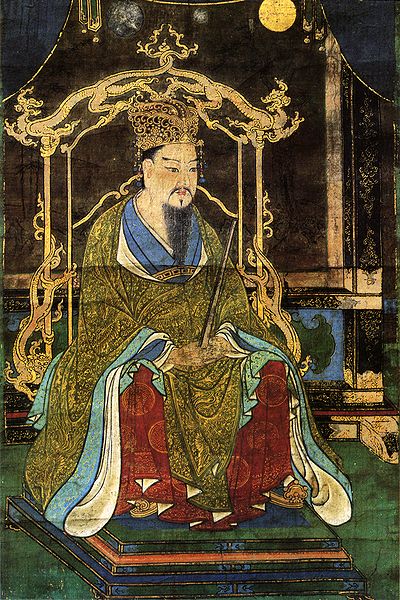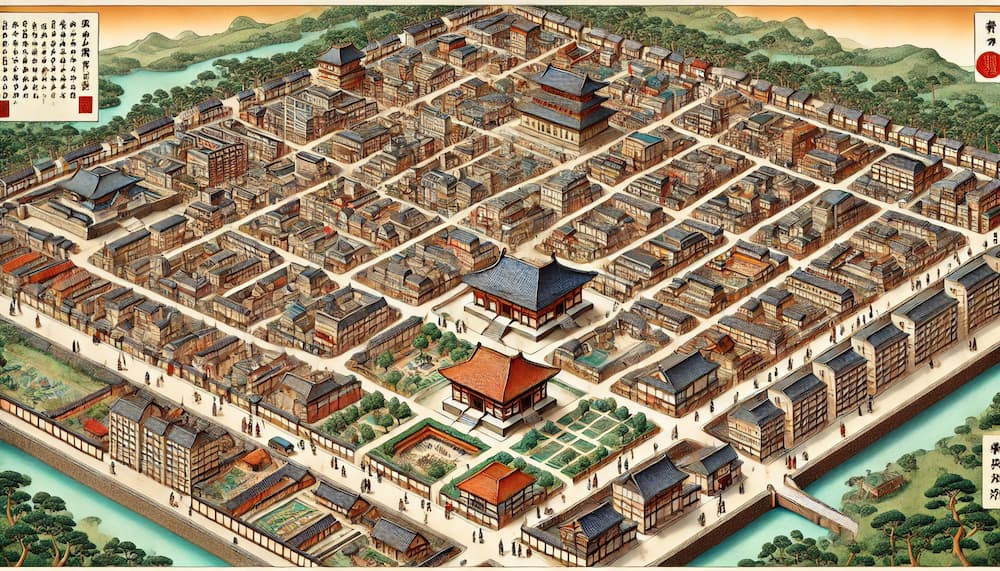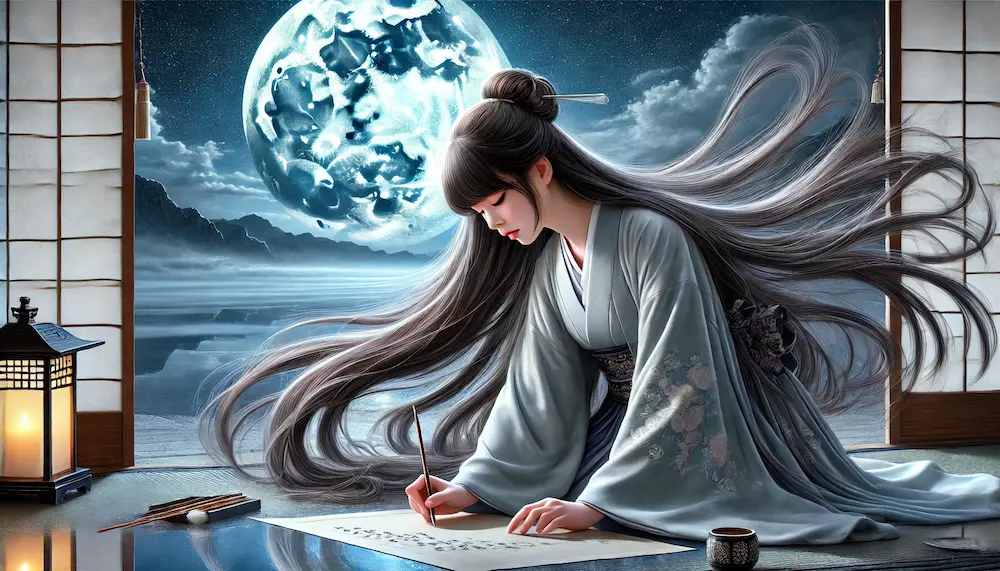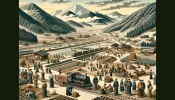Discover the Golden Age of Kyoto: Heian Period (794 AD – 1185 AD)
Welcome to the fascinating history of ancient Kyoto, originally known as Heian-kyo. This era began in 794 AD when Emperor Kanmu decided to establish a new capital, moving from Nara to a place we now call Kyoto. Heian-kyo was designed with inspiration from the Chinese capital, Chang’an, featuring a grid-like street system and magnificent palaces. It wasn’t just about architecture; it was the dawn of a cultural and artistic golden age.

The Flourishing Courtly Culture

The Heian period is perhaps best known for its courtly culture. Imagine a world where poetry, calligraphy, and elaborate rituals were part of everyday life. This was a time when classic Japanese literature flourished. Ever heard of “The Tale of Genji“? Written by Murasaki Shikibu, it’s often called the world’s first novel. Then there’s “The Pillow Book” by Sei Shonagon, offering a delightful peek into the lives and minds of the Heian aristocracy.
You can also find English versions of The Tale of Genji on Amazon. You should check it out if you’re interested!
■Recommended products
The Tale of Genji: The Authentic First Translation of the World’s Earliest Novel
The Rise of Buddhism
Religion, particularly Buddhism, was a big deal during this time. Temples like To-ji and Enryaku-ji became not only religious but also political powerhouses. The influential Fujiwara clan rose to prominence by marrying their daughters into the imperial family and mastering the art of political maneuvering.
Legacy of the Heian Period

One of the most remarkable aspects of the Heian period is how it has shaped Kyoto’s identity. The architecture, gardens, and traditions from this time have left a lasting legacy that you can still see today. For instance, the design principles of Heian-kyo influenced the development of subsequent Japanese cities.
Challenges of the Heian Period
Despite the beauty and cultural achievements, the Heian period wasn’t without its challenges. The latter part of the era saw increasing political strife and the rise of powerful warrior clans, setting the stage for the tumultuous times that followed. But the artistic and cultural achievements of the Heian period continue to shine brightly in Kyoto’s history.
Heian Period Landmarks You Can Visit Today
Many of the temples and buildings constructed during the Heian period are still standing and remain some of the most famous sites in Kyoto. Here are a few notable examples:
- Byodo-in
- Established: 1052 AD
- Highlights: Famous for its Phoenix Hall, which is featured on the Japanese 10 yen coin. The temple and its gardens are quintessential representations of Heian period aristocratic culture.
- To-ji
- Established: 796 AD
- Highlights: Founded by the monk Kukai, To-ji is renowned for its five-story pagoda, the tallest wooden structure in Japan.
- Daikaku-ji
- Established: 876 AD
- Highlights: Originally an imperial villa, this temple features the scenic Osawa Pond and beautiful traditional gardens.
- Kiyomizu-dera
- Established: 778 AD
- Highlights: Known for its wooden stage that offers stunning views of the city. The current buildings date from 1633, but the temple was a significant site during the Heian period.
- Enryaku-ji
- Established: 788 AD
- Highlights: Founded by the monk Saicho on Mount Hiei, Enryaku-ji is a sprawling complex and the headquarters of the Tendai sect of Buddhism.
- Kamigamo Shrine
- Established: 678 AD (significantly developed during the Heian period)
- Highlights: One of Kyoto’s oldest Shinto shrines, known for its association with the Aoi Matsuri and its serene, natural setting.
Walk Through History in Kyoto
So, when you stroll through Kyoto and visit its ancient temples and gardens, remember that you’re walking through the pages of history that began over a thousand years ago during the Heian period. It’s a journey through time, offering a glimpse into the heart of Japan’s cultural and historical heritage.
>NEXT
The Kamakura Period in Kyoto: Discovering the Historical and Cultural Heritage (1185 – 1333)










